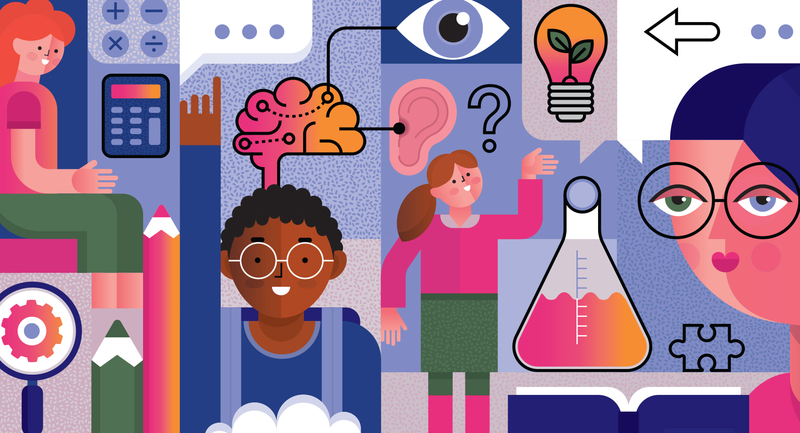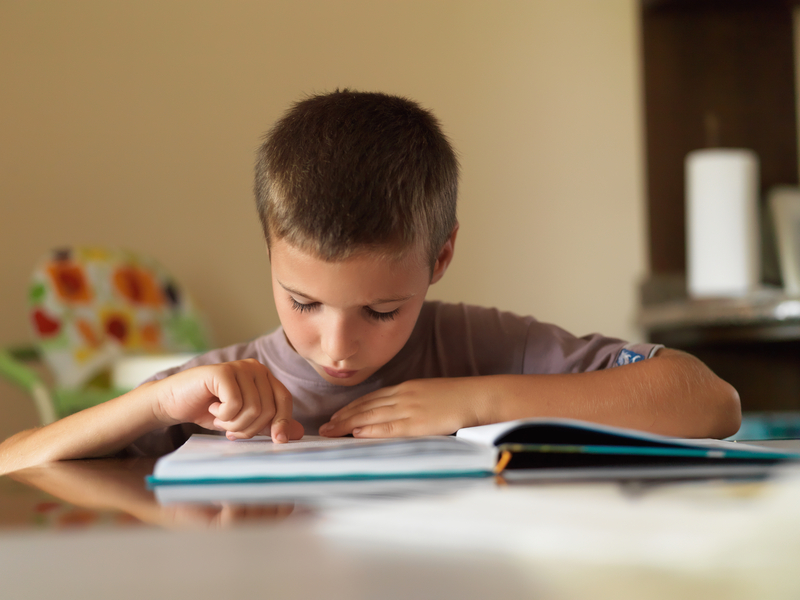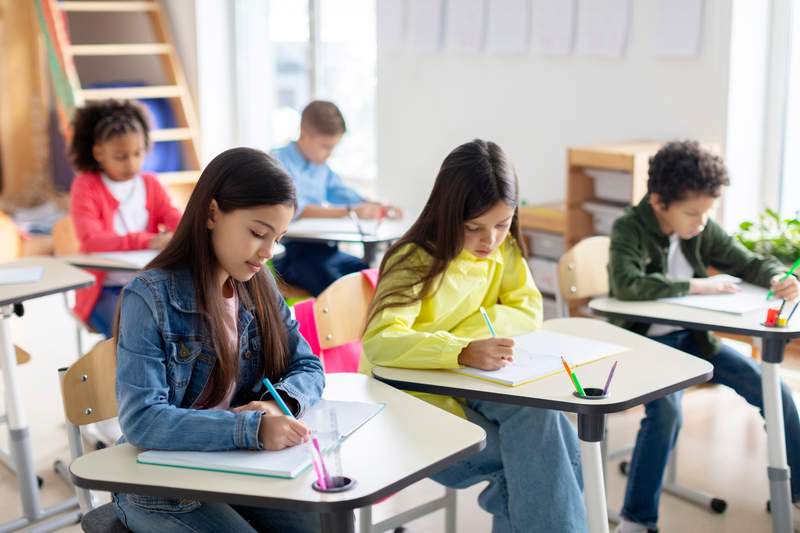Students arrive on our doorsteps vastly different from one another.
Some students are self-confident. They are organized, alert, and capable. Some students slump low in their chairs, hoping to survive but feeling defeated.
Some children have many friends. They know how to solve interpersonal problems using “win-win” strategies. They respect others and cooperate. Other students do not.
Some children have a vast knowledge of the world. They have traveled and have benefited from extensive interaction with adults. Other children have only seen the world through the television set.
To meet the needs of such diverse students, our K–8 public school began individual “Goal-Setting Conferences.” Over the last 10 years, we have found that goal setting gives credence to the many factors that affect learning, not just the “basic skills.” In 1991, we reformatted our goal setting to reflect Gardner's theory of multiple intelligences, a system that suggests all humans can be intelligent in as many as seven ways.
As I began using our new goal-setting form, I sensed that parents had an increased respect for their child's abilities now that they held the status of “intelligence.” The child who excelled at drawing was now valued as demonstrating Visual-Spatial Intelligence. The child who made friends easily and worked well in groups became respected for her Interpersonal Intelligence. The intelligence label validated the importance of the skill.
September Conferences
We begin our goal setting with conferences in September. These conferences provide me with the opportunity to learn about my students while establishing a warm, open relationship with parents. I encourage parents and students to verbalize what they feel is important to accomplish during the school year. My role during the conference is to listen and to ask questions.
I begin with the student: “Have you thought about your goals for this school year?” Setting goals is a basic, lifelong skill. Goals guide and focus one's energy. Because our students have been involved in Goal-Setting Conferences since kindergarten, they often have very clear opinions regarding their own goals. On the other hand, some do not.
I ask parents, “What is your child really good at? What is important in his life?” I note the child's strengths.
I continue, “What is hard for your child? What are you concerned or frustrated with?” Parents are the resident experts on their children. They know a child's history and way of approaching the world. I learn a lot by listening to what is said—and unsaid.
The Goal-Setting Form
Our goal-setting form begins with Intrapersonal Intelligence (the capacity for understanding the self). Students' goals focus on their feelings, confidence, responsibility, and self-management. Intrapersonal Intelligence is crucial for school success. Sue needs to figure out why she gets frustrated. Bonnie's goal is to relax and smile more. A 4th grader wants to “remember what assignments to get done.” Andrew's parents want their son to “be proud of your work.” Devin's goal is to “ask questions when I don't understand something.”
The second goal area relates to Interpersonal Intelligence (the ability to understand others). Most students set goals of “making a lot of new friends,” working well in cooperative groups, and solving interpersonal problems immediately rather than letting them fester. One student's goal was to learn the names of his classmates. To help him achieve this goal, I often asked him to pass out papers to the class. Other common goals relate to planning for cross-age mentoring with 1st and 2nd graders and peer tutoring within our classroom.
The conference form continues with goals related to Linguistic Intelligence. One child stated, “I want to be reading chapter books by the end of the year.” Another needs to “pay attention to proofreading.” A 5th grader wants to write “dynamic reports,” and John wants to be faster at cursive writing.
Students tend to have very specific Logical-Mathematical goals. For instance, “I want to be really good at long division.” “I want to feel comfortable with all fractions.” “I want to learn negative numbers.”
For Visual-Spatial goals, students often aim for achievements in geometry and art. One child wants to “make 3-D constructions.” Another wants to “draw cats well” or “draw houses in perspective.”
Bodily-Kinesthetic goals often include earning the Presidential Physical Fitness Award, a concrete achievement. One child wants to “run better so I don't get tired.” Another hopes to “play hard in gym rather than hanging back.”
Students' goals for Musical Intelligence often involve practicing an instrument: “I'm going to practice my flute 20 minutes every day.” Another goal is “better cooperation during music class.”
Our goal-setting form mentions two goals beyond Gardner's system. The World Understanding goal encompasses social studies and science information: “I want to study whales,” or “I want to know all the countries of the world.” In a section titled Other Goals in Your Life, students write statements like, “I'm going to keep my room clean,” and “I want to be a lunchroom helper.”
Goal Setting: A Student-Parent-Teacher Process
Checking In
February brings a second round of conferences to review progress toward the original goals. I begin by asking the student for self-evaluation. “How do you feel you are doing on remembering the assignments?” “Do you feel you are learning hard enough math?” “Are you able to work through group problems more than you were earlier in the year?” Our February conference reaffirms, refocuses, and celebrates. I also redirect goal statements, since I now have a better understanding of my student's abilities and learning styles.
Throughout the year, I refer to the concept of multiple intelligences in class. When I read aloud to my students, I discuss the type of intelligence the novel's characters seem to possess. As students create 3-D geometric shapes, I discuss Visual-Spatial Intelligence. I play Native American flute or Spanish guitar music as background during journal or work time, and then I discuss Musical Intelligence. I refer to the wide variety of intelligent behaviors that world cultures value. As students internalize the many forms of intelligent behavior, they broaden their respect for the diversity of abilities within our classroom.
Valuing Goals
While the goal-setting process is important, remembering the goals and consciously working toward success are also crucial. I help students rewrite each of their goals into affirmation statements. In their journals, they write and draw about imagined successes relating to their goals. Two-time Olympic pentathlete Marilyn King describes the process: “To accomplish any goal, you must have a crystal clear image of that goal and keep it uppermost in your mind. We know that by maintaining that image, the `how-to' steps necessary for the realization of that goal will begin to emerge spontaneously. If you cannot image the goal, the `how-to' steps will never emerge, and you'll never do it. Clearly the first step to any achievement is to dare to imagine that you can do it” (1988, p. 15).
The goal-setting form is an important part of our student assessment and an important aspect in building a positive relationship with parents. Our documentation of student growth includes portfolios, collections of significant student work, students' successes, comments, and photographs of presentations, plays, and three-dimensional creations. The portfolios contain students' self-evaluations as well as learning style assessments. Drawings, writing, and summative computer printouts on math computational skills are also included. Parents are invited to Achievement Days to examine the portfolios. Not only do parents and children thoroughly enjoy this personal focus time, but parents also get to see how goal setting has affected their children's education.
Individual goal-setting conferences require precious teacher time in September and February, but the benefits significantly outweigh the effort. Goal setting has proved to be an excellent system in our school and has been adopted by others.
Individual goal setting helps us honor student differences and plan for the wide range of diverse needs. And by using Gardner's multiple intelligences, all areas of growth become the domain for school learning and all kinds of excellence are celebrated.







